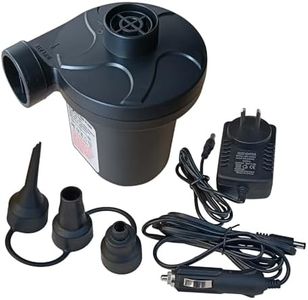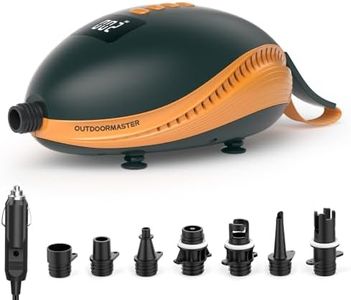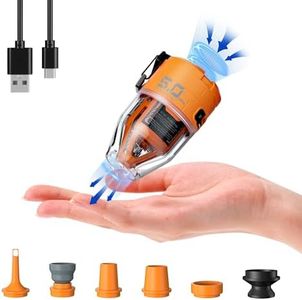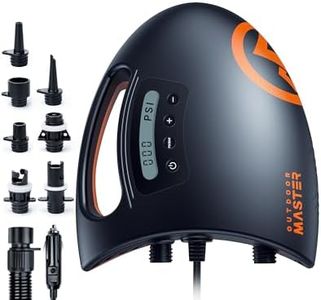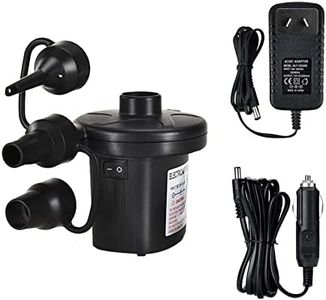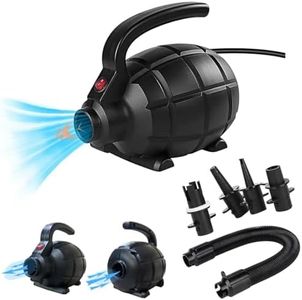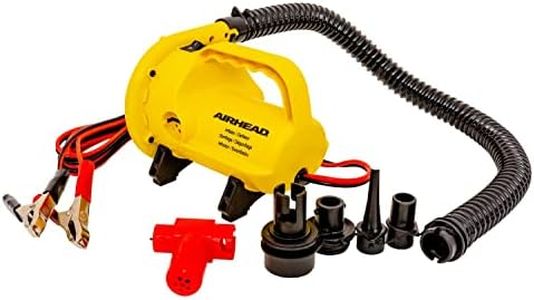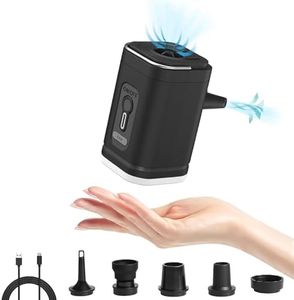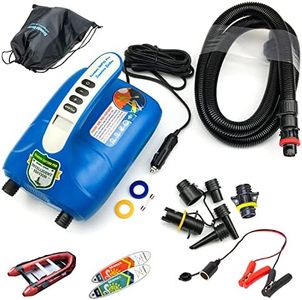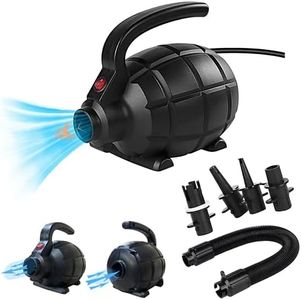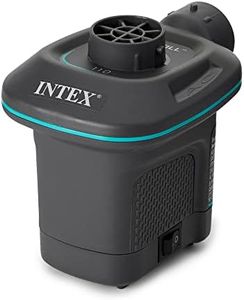We Use CookiesWe use cookies to enhance the security, performance,
functionality and for analytical and promotional activities. By continuing to browse this site you
are agreeing to our privacy policy
10 Best Electric Pump For Inflatables
From leading brands and best sellers available on the web.Buying Guide for the Best Electric Pump For Inflatables
Choosing an electric pump for inflatables is all about finding a model that matches your typical usage. Think about what you'll be inflating—whether it's small pool toys, large air mattresses, or even inflatable boats—since your needs will determine the most suitable size, power, and features. Understanding the key specifications will help you find a reliable pump that gets the job done efficiently and conveniently.Airflow Rate (CFM or L/min)The airflow rate tells you how much air the pump can push out per minute, usually measured in CFM (cubic feet per minute) or liters per minute (L/min). This spec is important because it directly affects how fast your items will inflate. Lower rates are fine for small inflatables like pool toys, but if you want to inflate larger items such as air beds or boats, look for a higher airflow rating for faster inflation. Consider the size and frequency of what you inflate to choose the right airflow rate—a higher number means quicker results for bigger items.
Maximum Pressure (PSI)Maximum pressure, often listed as PSI (pounds per square inch), is the highest pressure the pump can deliver. It's crucial because some inflatables require more pressure to stay firm—think of SUP boards or certain mattresses—while delicate toys need much less. For high-pressure needs, pick a pump with a higher maximum PSI. If you only use low-pressure pool toys, almost any pump will suffice. Always check what your inflatables require and make sure your pump can meet or slightly exceed that pressure without going far beyond what's safe.
Power SourceElectric pumps can use different power sources, such as plugging into a standard wall outlet (AC), a car's 12V outlet (DC), or using built-in rechargeable batteries. This matters because it affects where and how you can use the pump. For home use, a wall-powered pump is convenient. If you go camping or inflate at the beach, a car or battery-powered option offers more flexibility. Choose according to where you expect to use your pump most often.
Nozzle AttachmentsDifferent inflatables have different valve sizes and types, so the variety and number of nozzle attachments a pump includes is very practical. More nozzle options mean the pump can handle a wider range of items. If you have several types of inflatables, look for pumps that come with multiple nozzles. Always match the nozzle to your specific inflatables for a proper seal and efficient inflation.
Deflation CapabilitySome electric pumps can also deflate inflatables by sucking the air out, which is handy for packing up products quickly and compactly. This is especially helpful with bulky items. If you often deal with large inflatables, or dislike the hassle of manual deflation, consider a pump that offers a deflation function as well as inflation.
Portability and SizePortability refers to how easy the pump is to move and carry. Smaller, lighter pumps are easier to bring along on trips, while larger, heavier models might be better for home or stationary use. Think about whether you'll be traveling with your pump or just using it at home, and choose a size and weight that fits your lifestyle.
Noise LevelNoise level is how loud the pump is during operation. Some electric pumps can be quite noisy, which might be a concern if you need to use it early in the morning, indoors, or around others. If quiet operation is important to you, look for pumps that are described as low-noise or check user reviews for comments on sound.
